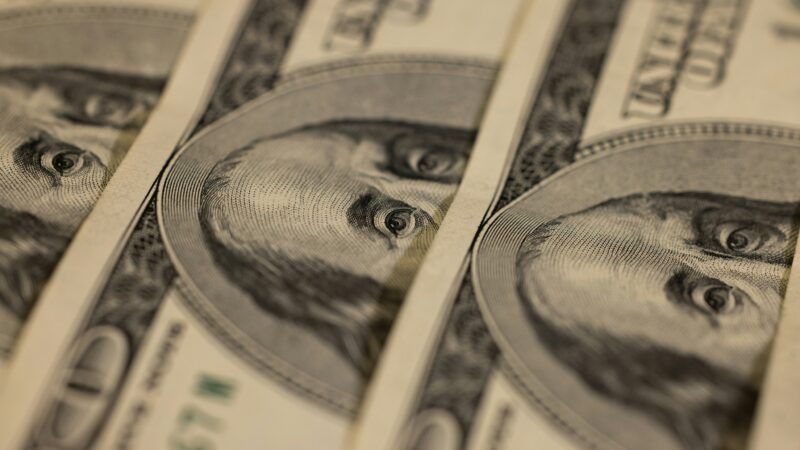Budget Deficit Hit $1.8 Trillion After Huge Increase in Borrowing Costs
Spending increased by 10 percent last year, while tax revenue increased by 11 percent. Interest payments on the debt shot up by 34 percent.

The federal government posted a $1.8 trillion budget deficit during the fiscal year that ended on September 30, despite an increase in tax revenue, thanks to higher spending and the rapid growth of interest costs tied to the $35.6 trillion national debt.
The only good news contained in the Congressional Budget Office's latest revenue report is that the federal budget deficit did not get significantly worse during the most recent fiscal year. The deficit increased by a mere $139 billion when compared to the previous year.
But the fact that the deficit increased at all in a year when revenue from federal tax collections climbed by 11 percent—from $4.4 trillion to $4.9 trillion—suggests something about the nature of the fiscal problems facing the federal government. Specifically: that it's a spending problem. The federal government spent $6.75 trillion last year.
More specifically, it's a borrowing problem. While spending increased by about 10 percent from the year before, the interest payments on the national debt ballooned by 34 percent—from $710 billion to $950 billion. That sharp increase reflects both the size of the national debt, which is now roughly as large as the nation's annual economic output for the first time since World War II, and the rising interest rates that have been a feature of the economy for the past few years.
Interest rates might be on their way down, but that's unlikely to provide much relief. According to CBO projections published earlier this year, the cost of serving the national debt will continue to skyrocket in the coming years. By 2034, the CBO estimates that the federal government will spend more than $1.6 trillion on interest payments.
Higher debt means lower economic growth and more difficult decisions about how the government should prioritize the tax dollars that are left over after the interest payments are made. But you'd never know that from this year's presidential campaign, where discussion about the debt has been largely absent.
Instead, both Vice President Kamala Harris and former President Donald Trump have been eager to pitch ideas that will widen the deficit and pile on additional debt. According to an analysis by the Penn Wharton Budget Model, a fiscal policy think tank at the University of Pennsylvania, Trump's proposals would add $5.8 trillion to the deficit over the next decade. Harris, meanwhile, would add an estimated $2 trillion in larger deficits over the next decade, thanks to a combination of higher government spending and lower economic growth (a result of her plan to hike taxes).
Separately, the Committee for a Responsible Federal Budget (CRFB), which advocates for smaller deficits, estimates that Trump's campaign trail promises would add around $7.5 trillion to the deficit over the next decade. The same group estimates that Harris would add around $3.5 trillion to the deficit. (In both cases, the numbers could vary widely based on what policies get implemented and several other factors—but the one constant across the CRFB's estimates is that the deficit will grow.)
This year's election is by now a missed opportunity for the country to have a serious debate about how much the federal government should spend and (perhaps even more importantly) how that spending should be funded. Americans are paying more and more every year to fund the federal government—and yet, those taxes are once again insufficient to meet the government's seemingly endless appetite for spending.


Show Comments (28)